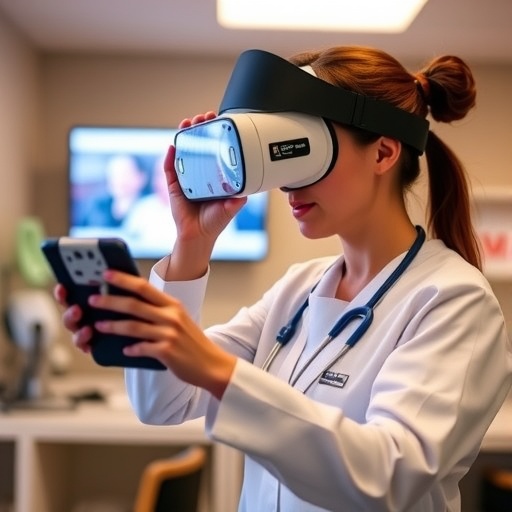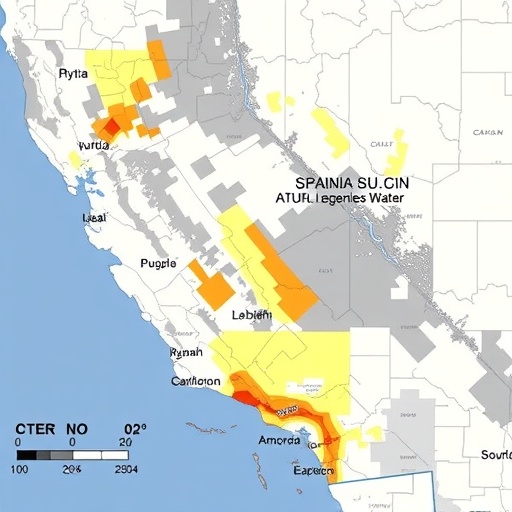In recent years, the integration of virtual reality (VR) technologies into the educational landscape has gained traction, especially in fields requiring practical training such as nursing. A pivotal study titled “Modeling the evolution of virtual reality in nursing education: a BERTopic-based analysis of research trends and future directions” sheds light on the transformative potential that VR holds for nursing education. This comprehensive research, executed by Xian, Wu, and Lee, painstakingly explores how VR can reshape educational methods and enhance clinical experiences for nursing students.
The study identifies and analyzes significant trends and themes in the current research surrounding the implementation of VR in nursing education. As healthcare becomes increasingly complex, educators are compelled to rethink traditional training methods. Nursing, being a profession that demands a high level of interaction and simulation of real-world scenarios, can significantly benefit from the realism that VR technologies offer. Through their research, the authors seek to establish a framework for the current state of VR in nursing education and discuss potential avenues for future exploration and development.
A core aspect of the study involves using the BERTopic model, an advanced analytical tool that clusters large datasets into coherent topics based on semantic similarities. This method allows the researchers to distill countless studies into digestible themes while capturing the nuanced ways in which VR applications are being implemented in nursing education. The ability to visualize and segment research data enhances the understanding of how various approaches are working to improve nursing training programs.
As they delve into the evolution of VR technology, the authors draw comparisons between conventional teaching methods and emerging VR applications, highlighting the strengths and weaknesses of each. Traditional training methods often rely heavily on textbook learning and limited simulation experiences, which can leave students inadequately prepared for the rapidly changing landscape of patient care. In contrast, VR offers immersive simulations that can mimic real-life situations, allowing students to practice clinical skills in a safe environment where mistakes have no dire consequences.
The study also examines how VR can promote active learning. Instead of passively receiving information, nursing students engage in experiential learning through simulations that require critical thinking and decision-making. This engagement not only fortifies their clinical skills but also bolsters soft skills such as communication and teamwork, crucial attributes in high-pressure healthcare settings. The interactive nature of VR enables a more nuanced understanding of patient interactions, ultimately leading to better patient outcomes.
An essential part of this research is the acknowledgment of the barriers to implementing VR in nursing education. While the benefits are significant, the initial costs of VR technology and the training required for educators must be taken into account. Many institutions may find it challenging to allocate resources towards the integration of VR into their curriculums. Nonetheless, the authors argue that the long-term advantages of enhanced training outweigh the initial investments, positioning nursing programs to be at the forefront of healthcare education innovation.
Furthermore, the authors highlight real-world examples where VR has been successfully implemented in nursing curricula. Pilot programs across various universities demonstrate the effectiveness of VR in teaching complex procedures, such as surgical techniques or emergency response protocols. These successful integrations serve as models for other institutions aiming to innovate their teaching methodologies while better preparing their students for the demands of modern healthcare environments.
The article meticulously charts out a distinct trajectory for future VR applications in nursing education, suggesting various areas where further research is needed. This includes the need for longitudinal studies to assess the long-term impacts of VR training on nursing competency and patient care. Additionally, as the technology continues to evolve, it will be crucial for academic institutions to keep pace by continually adapting their curricula to incorporate new advancements in VR technology.
Moreover, addressing the cultural and ethical dimensions of simulated training is imperative as the authors emphasize the need for sensitivity and inclusivity in VR scenarios. It is pivotal that VR simulations reflect the diverse patient populations nursing students will encounter in their careers. Educators must ensure that VR content is developed with an understanding of the social determinants of health and the unique needs of various communities.
By offering a comprehensive overview of the current landscape and paving the way for future exploration, this research study by Xian, Wu, and Lee positions VR as a catalyst for innovation in nursing education. As nursing programs around the globe look to prepare the next generation of healthcare professionals, integrating technologies like VR will not only enhance educational outcomes but can also fundamentally change the caregiving landscape.
In conclusion, the analysis performed by Xian, Wu, and Lee serves to highlight the immense potential of VR in revolutionizing nursing education. By modeling the evolution and applications of this technology, their research provides a solid foundation for stakeholders in healthcare education to rethink and reengineer training methodologies, ultimately leading to improved healthcare delivery and patient safety. As VR technology continues to advance, the potential it holds for empowering nursing students and equipping them with the skills necessary to succeed in their careers remains undeniably transformative.
Subject of Research: The evolution and applications of virtual reality in nursing education.
Article Title: Modeling the evolution of virtual reality in nursing education: a BERTopic-based analysis of research trends and future directions.
Article References:
Xian, J., Wu, J.G. & Lee, SM. Modeling the evolution of virtual reality in nursing education: a BERTopic-based analysis of research trends and future directions.
BMC Nurs 24, 1332 (2025). https://doi.org/10.1186/s12912-025-03938-5
Image Credits: AI Generated
DOI:
Keywords: Virtual reality, nursing education, BERTopic analysis, immersive learning, healthcare training, nursing competencies, educational innovation.
Tags: BERTopic analysis in nursing researcheducational technology in healthcareenhancing clinical experiences with VRfuture of nursing education with VRimmersive learning in healthcareimpact of VR on nursing traininginteractive learning for nursing studentssimulation-based learning for nursestransforming nursing education methodstrends in nursing education technologyvirtual reality applications in healthcare trainingvirtual reality in nursing education





